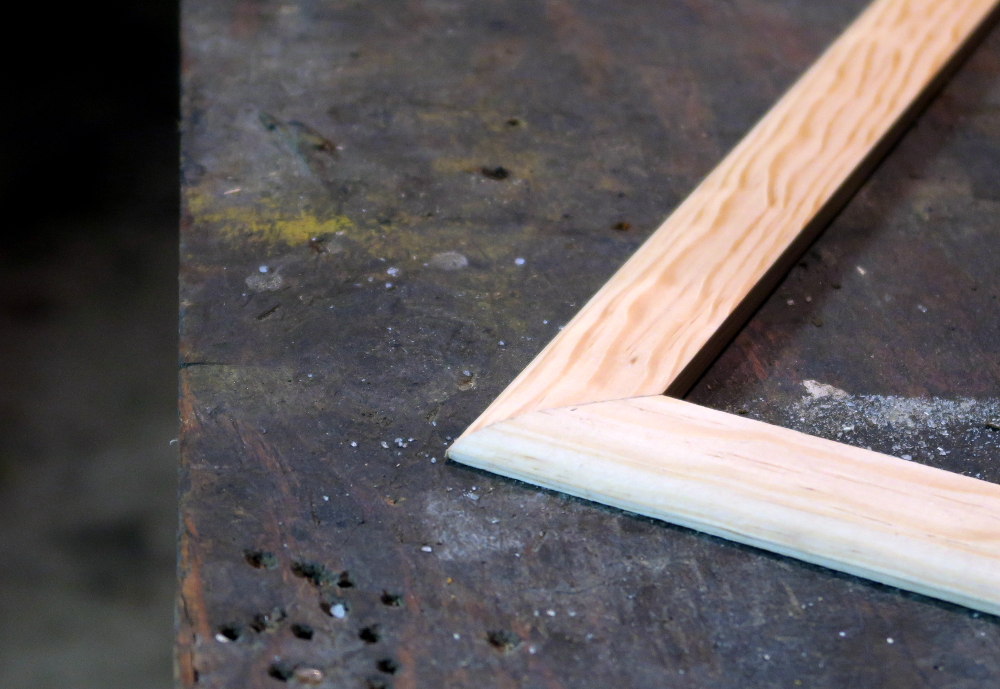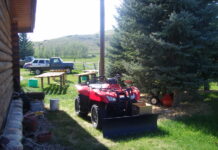
I use to cut small boards for my projects with a hacksaw and a miter box. I had the large sheets cut at the home center before buying them. Efficient? Hardly. Did it work? Most of the time. But, now my projects require an upgrade in tools.
(Find the best deals on miter and table saws on Amazon.)
In this article, I compare and contrast the differences of a table saw vs a miter saw.
The gist of why to choose a miter saw over a table saw (or vice-versa) follows:
A table saw rips long, large boards with ease. A miter saw excels at cutting angles on small boards. However, a table saw can be used with a miter gauge, which allows it to cut angles, but a miter saw will never be able to cut long, large boards — the same holds true with the best radial arm saw.
Best selling table saws on Amazon
- RACK AND PINION FENCE RAILS - Ensures fence stays parallel to blade for fast smooth, and accurate cuts
- INTEGRATED FOLDING STAND - Legs quickly fold in to provide portability and convenient storage
- PARALLEL BLADE ALIGNMENT - Available micro-adjustment of blade so that it is parallel to rip fence and miter slot
- 4x4 CUTTING CAPACITY - Cuts material up to 4x4 at 90 degrees
- 2-47° BEVEL CAPACITY - Cuts between 2 positive stops at 0 and 45 degrees with quick release lever
- Your purchase includes one Dewalt table saw, 10inch 24-tooth carbide blade, rolling stand, push stick, miter gauge, rip fence, 2x blade wrenches, blade guard assembly manual
- Other Specs: Max rip to left of blade – 22inch | Max rip to right of blade – 32-1/2inch | Max width of Dado – 13/16inch | Arbor size – 5/8inch | Amps – 15 | Depth of cut at 45inch – 2-1/4inch | Depth of cut at 90° – 3-1/8inch | No Load Speed: 4800 RPM
- Rolling stand designed for easy set up and breakdown with excellent stability
- Rack & Pinion Telescoping Fence System Make fence adjustments fast, smooth and accurate
- Features a 15.0A high torque motor with the power to cut pressure treated lumber and hardwoods
- Included Components: (1) Dwe7485 8-1/4 In. Table Saw; (1) Fence; (1) Anti-Kickback Pawls; (1) Miter Gauge; (1) Push Stick; (1) 24T 8-1/4 In. Blade; (1) Non-Thru Cut Riving Knife; (2) Blade Change Wrenches; (1) Modular Guard System
Affiliate links / Images from Amazon Product Advertising API
Best selling miter saws on Amazon
- LARGE TABLE SAW 10 INCH : Metabo HPT's compound miter saw offers better material support with its vice clamping system to secure the workpiece. This single-bevel table saw 10 inch is your ticket to fast and precise cuts, perfect for all your professional or DIY projects.
- PORTABLE DESIGN: The compound miter saw from Metabo HPT is lightweight, at only 24.2lbs. Our portable miter saw is easy to maneuver. The thumb-actuated positive stops allow for quick miter adjustments. 10" miter saw blade included
- POWER SAW FOR PRECISE WOODWORKING: this durable woodworking tool is equipped with a 15 Amp motor to deliver high power for the toughest of cuts, generating a no-load speed of up to 5,000 RPM.
- SAFETY FEATURES: This miter saw includes an electric brake that halts the rotation of the blade within seconds. The built-in blade guard protection and horizontal handle ensure safe cutting.
- VERSATILE AND PRECISE CUTS: Our power saw features a 0-52 degree miter angle range to the left and right for increased flexibility. The bevel range is 0-45 degrees to the left with adjustable bevel stops for precision cuts.
- POWERFUL 15 AMP MOTOR - Delivers 4,800 RPM for quick, detailed cuts
- DUAL BEVEL – Perform cuts in four positive stop positions at 48° & 45° left, 0°, and 45° right
- LED SHADOW LINE - Provides high precision cuts with greater accuracy than lasers
- 2x12 CUTTING CAPACITY – Cross cuts lumber up to 2x12 at 90 degrees, and 2x8 lumber at 45 degrees
- CUTS AT COMMON ANGLES - Cuts up to 50 degrees left and right with 11 positive stops at most used angles
- Stainless steel miter detent plate of the 12-inch miter saw blade comes with 10 positive stops
- The mitre saw has a precise miter system and machined base fence support
- Precise miter system and machined base fence support Cam-lock miter handle with detent override delivers quick and accurate miter angles for DEWALT miter saw
- Tall sliding fences support 6-3/4-inch base vertically
- Bevels 0 degree - 48degree left and right
Affiliate links / Images from Amazon Product Advertising API
Comparison: miter saw versus table saw
Safety: Saw injuries are usually serious injuries. Miter saws are safer. Most have automatic brakes that stop the blade quickly when you release the trigger. Most table saws, especially cheaper ones, don’t have this feature.
Guards: Miter saws usually have a built-in guard shielding you from the blade. Table saw guards are not as effective, since one hand or both have to reach past the blade if you are not using a pushblock.
For work where a flip-down guard gets in the way, you might want to consider using a miter saw.
Kick back: Table saws can kick loose material right back at you, such as knots or hidden chips.
Larger pieces of wood can come right out of your hands if you aren’t prepared.
Table-saw blades rotate toward you, whereas miter saws rotate away from you, so you rarely have this problem with a miter saw.
Angles: Miter saws are designed for cutting angles, and nothing does it better or easier.
There are built in presets that you can move to in either direction for cuts up to 50 degrees off center.
A table saw can be used a good miter gauge to get the same results as a miter saw. But, a table saw and miter gauge are are little more difficult to use and more error-prone, especially the cheap versions, while cutting angles.
Sheets: Table saws are the best solution to cut long boards or 4×8′ sheets. Like any tool, it does take a little help and practice at first.
Miter saws are meant for small work and single boards, often 6″ or less. A sliding miter saw can extend this to 12″ to 15″, but many projects require cutting larger sheets or panels where a miter saw is useless.
Cutting to width: Nothing rips a board lengthwise like a table saw.
Miter saws can’t rip lumber to width, and hand saws are impossible to get the job done accurately. Miter saws only cut at right angles to the length of the board.
Trim: The miter saw is the perfect tool for cutting trim.
It’s quick, and easy to adjust to any angle. It’s portable, so that it can be carried where needed by one person, and rest on any table top or bench.
Whereas a larger table saw requires two or more people to move as well as ample floor space and a miter gauge, which can be a pain.
Joinery: Table saws are better for cutting joinery than a miter saws. They can also be equipped with blades for cutting channels, tenons, and so forth, and the saw cut depth easily adjusted.
Miter saws typically come with a standard saw blade, and in any case are harder to manipulate for anything other than narrow cross cuts.
If use a pocket hole jig and screws to join boards, you won’t need to cut channels or tenons or any fancy joinery cuts.
Tilt: Bevel cuts are a common requirement in woodworking and construction projects.
The ability to title the blade to any cutting angle is best done with a table saw. A basic miter saw cuts straight down at a 90-degree angle.
Budget: While it’s unfair to compare the capabilities of a $900 table saw versus a miter saw costing $100, a miter saw is generally much cheaper.
If you are going to be primarily cross-cutting single boards, save the strain on your back and your wallet and get a miter saw instead of investing in a table saw. Get the home center or lumbar yard to rip the long, sheet boards for you.
Versatility: Most shops do the vast majority of their cutting on a table saw, where the type, depth, angle, and bevel of the cut can all be adjusted accurately.
A good saw is indispensable for cutting longer lengths, and there are plenty of table saw accessories for various tasks.
But, changing blades, moving fences, etc. can be an extra hassle and time-consuming. Nothing beats a good miter saw on a job site or at the shop where a lot of angled cross-cutting has to be done to make pieces fit.
I hope this helps with the debate about the table saw vs miter saw.
(Find the best deals on miter and table saws on Amazon.)
Originally posted 2023-01-06 01:36:31.


